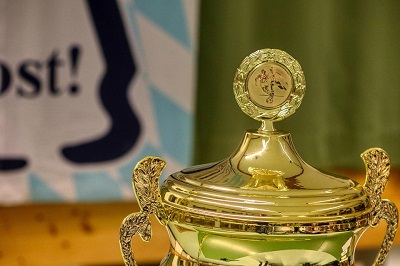Understanding Baby Crickets: A Thorough Overview
Crickets:
Crickets are incredibly interesting insects. They support food chains in many ecosystems and act as a type of natural decomposer. Although the adults are considered to be screamers due to their role in the folklore of many different cultures, it is very interesting to get to know the chicks better. In this article, we will learn about the life cycle of crickets, how the chicks grow, what they eat, and how to care for them if you are thinking of raising them. We will also answer some frequently asked questions about these little creatures.

The Life Cycle of Crickets:
Their development process is known as incomplete metamorphosis. Unlike butterflies, which exhibit a complete metamorphosis with distinct larval, pupal, and adult stages, exist in egg, nymph, and adult life stages.
-
Egg stage:
Female crickets lay eggs in moist soft soil, or in other plant materials, where the eggs will not be seen and stay until their hatching time. Eggs are small and will often hatch in groups from one female cricket, which will drop 50-100 at a time.
-
Nymph Stage:
When the eggs hatch, they produce tiny, wingless called nymphs. The nymphs resemble miniature versions of adults, except that they do not have wings. Nymphs are usually pale and turn darker as they grow older. They molt, or shed their exoskeletons, several times before growing into adults.
-
Adult Stage:
After several molts, typically after about 8-10, nymphs finally start to grow wings and get fully developed adult crickets. Now they can start chirping, mating, and laying eggs, further continuing the cycle.
External Appearance and Behavior of Young:
Juveniles are very small, pale nymphs that look like adults but lack fully developed wings. They have a segmented body with long antennae and long, strong hind legs that they use for jumping. As they grow, their exoskeleton darkens and hardens, and their legs, antennae, and overall size increase.
Nymphs are usually very active, moving and searching for food, trying to avoid predators as much as possible. Juveniles do not vocalize like their parents, but behave in the same way as adults, seeking shelter and other food sources.
Breeding and Rearing of Baby:
Crickets:
If you are keeping a baby, there is a need to understand their nutritional requirements. BBabiesare omnivorous and will eat a wide variety of foods, both plant and animal matter. The diet can include the following:
- Vegetables: Fresh greens like lettuce, carrots, and spinach. These provide moisture and nutrients.
- Fruits: Crickets will consume fruits like apples, oranges, and bananas.
- Commercial Cricket Food: There are commercially available cricket food pellets that can be fed to nymphs as a balanced diet.
- Protein: Crickets can also be fed small amounts of protein, such as crushed eggshells, fish flakes, or other high-protein foods.
It’s essential to provide a source of water for them, as dehydration can quickly kill crickets. However, be careful to avoid standing water, which can drown baby crickets. Instead, use a damp sponge or a shallow dish with moist cotton balls to ensure they stay hydrated.
Habitat for Baby Crickets:
Crickets:

To raise a healthy baby, it’s important to create an appropriate habitat. Nymphs need a warm, humid environment to thrive. Here are some tips for creating the ideal habitat for them:
- Temperature: Crickets prefer temperatures between 75°F and 85°F (24°C to 29°C). They need warmth to grow and develop, so a heat source like a small lamp or heat pad is often necessary.
- Humidity: Crickets need a humid environment. The enclosure should be kept moist and not dry, which could cause dehydration and affect the molting process.
- Space: A small enclosure or plastic container with good air circulation is ideal for crickets. The container needs to be large enough to move around yet not so large that the becomes stressed.
- Substrate: Soft soil or coconut fiber can be used at the bottom of the enclosure to resemble their natural environment. This will also give them a place to lay eggs as they mature.
Frequently Asked Questions (FAQs):
Crickets:
1. How long does it take for a baby cricket to grow into an adult?
Typically, from nymph to adult cricket would take approximately 8-10 weeks, which relies on the environmental conditions provided, including temperature and moisture. With ideal conditions, will grow as fast as possible, molting several times to reach maturity. Cool conditions could slow the growth down a bit.
2. How long does a baby survive without food?
Baby crickets can survive for some time without food, like any insect, and they need a constant supply of food to grow and develop properly. Not eating for several days can cause stunted growth or even death. So keep a supply of food to meet their nutritional needs.
3. My baby crickets are dying. What do I do?
If you find your baby is dying, then it could be several reasons. Some common ones are dehydration, incorrect temperature, or mold in their habitat. Make sure they are warm, humid, and clean. If fresh food and water are given to them along with a neat enclosure, then it helps to decrease the death rates.
4. How many babies can be kept in one enclosure?
The number of you can keep in an enclosure depends on its size. As a general rule, avoid overcrowding, as this can lead to stress, disease, and competition for resources. A small enclosure can typically house 50-100 babies but larger numbers may require a bigger space to ensure they all have enough room to grow.
5. Do baby crickets chirp?
No, baby do not chirp. Only adults can chirp. That is, only the fully grown-up produce the characteristic chirping of crickets. This chirping noise is produced due to stridulation which is basically a mating call. The babies are nymphs and lack developed wings so they cannot chirp.
Conclusion:
Crickets:

Baby crickets, or nymphs, are great because they quickly grow into chirping adults that always seem to come out at night. To keep them happy it’s important to understand their nutrition, hydration, and habits. Whether you want to keep them as pets, feed them to reptiles, or are just curious to understand their life cycle, crickets are tiny but extraordinary insects that make a huge contribution to the world around them.

